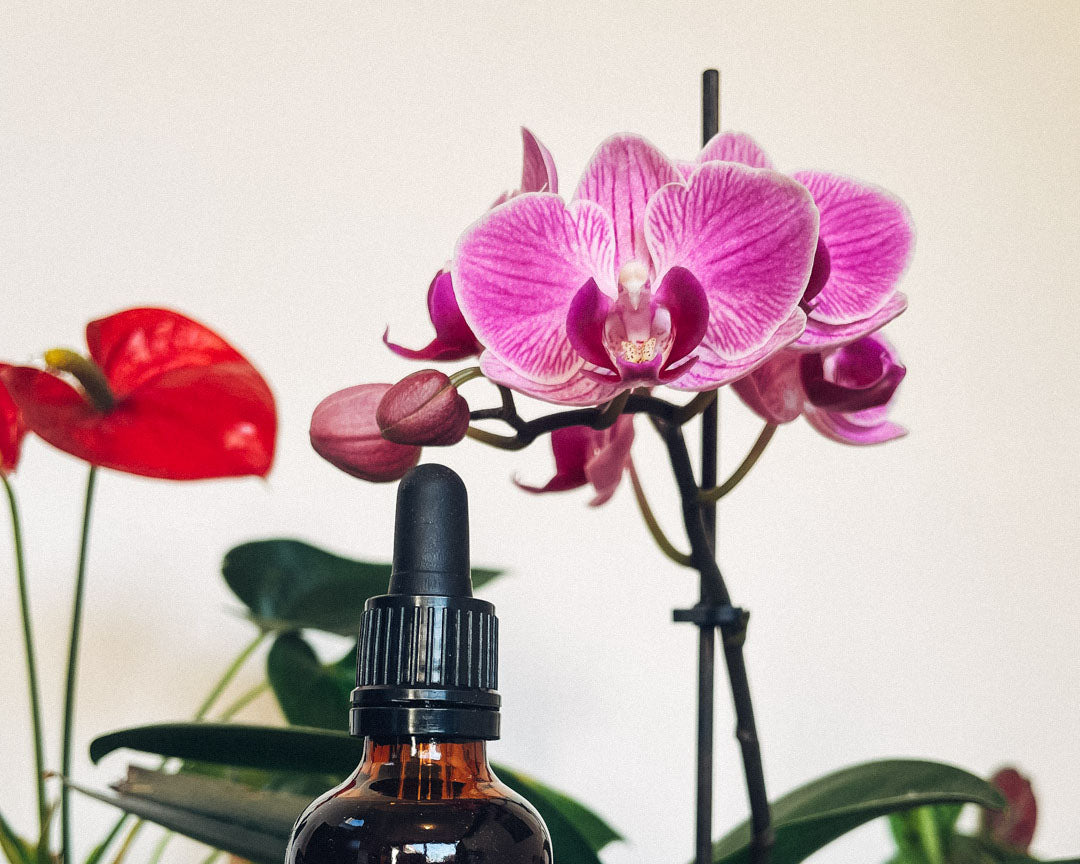For many years, orchids have become an essential plant in garden centres. With their flowers of rare elegance, phalaenopsis can be a refined and sophisticated gift, easy to associate with interior decoration. No wonder they are the third most sold plant in France, with 5 million pots per year!
However, its major problem is that very often, its flower ends up withering in a few weeks. And then only two leaves and a stunted stem remain, leaving us wary of the eternal question: “When and above all how will my orchid bloom again?”
As so often, it is by adopting a logic of biomimicry that you will find the simplest answer... Take inspiration from what happens in nature and try to reproduce it. Although there are 160 species of orchids in the wild in France, the varieties found in commerce are closer to species living in equatorial zones. They will feel good in warm and humid atmospheres, and will appreciate the slight variations in temperature between day and night.
So to hope to see your orchid bloom, master the flowering period and act on 3 fairly simple parameters: brightness, temperature, and a suitable fertilizer correctly applied.
When do orchids bloom?
This can vary from species to species. But usually they bloom twice a year, in spring and fall. Be careful not to confuse the flowering period with the period during which the plant will flower. Orchids blooming in the fall can keep their flowers for many weeks in winter. The most experienced even manage to keep their orchids in bloom almost all year round.
In general, it should be understood that orchids have a cycle: growth/flowering/dormancy, which they reproduce indefinitely, and which you will have to understand. If you have been offered a plant in flower, that it has faded, and that it is vegetating, it is probably because the conditions in which it is, favor stagnation in dormancy. This is when you can act.
What light for my orchid?
Orchids need lots of light. A southern exposure is essential to stimulate flowering. But beware of direct sunlight which can be harmful. During the summer months, place them behind a curtain, for example, to block out the light.
The very often overlooked feature of orchids is that they are epiphytic plants. That is to say, they live naturally clinging to trees or rocks. They do not need to be planted in potting soil. Their roots are able to capture water and minerals from the surrounding air. This is the reason why they are often found in transparent plastic pots. If you use a pot cover, make sure you can pass 2 fingers between it and the pot.
This will allow the roots to develop well. And if roots protrude above the surface, let them extend around the pot. A good way to know if your orchid lacks light is to watch the leaves. If they are abnormally large, or they turn yellow, this is a sign that a change of location is to be considered.
What room temperature for my orchid?
Orchid enthusiasts often grow them in greenhouses, to get closer to their natural conditions. the ideal being a temperature of 20-30 degrees during the day, and 15-22 degrees at night. But don't panic, they can thrive in more classic conditions, provided you have a few things in mind.
Unlike their development in the natural environment, orchids have cycles influenced by our climate and indoor life. During the dormant period, the plant will renew and store in its roots the nutrients that will be necessary for its flowering. To stimulate it, a temperature of around 15-20 degrees will be ideal.
Which fertilizer for my orchid?
Use a natural orchid fertilizer . Its NPK dosage will be rather concentrated in phosphorus to stimulate the health and development of its roots, and in potassium to meet the needs of flowering. You will thus have robust roots capable of making the necessary reserves to boost flowering.
Prefer organic organic fertilizers, to be diluted in water to water the substrate and the roots. It is also possible to use foliar fertilizers (to spray on the leaves). Orchids hate hard water. It is for this reason that certain fertilizers are deliberately acidifying, in order to maintain an acid-base balance. The ideal is to use rainwater, which will be closer to the runoff water that they draw in their natural conditions.
You are therefore ready to experience the unique pleasure of seeing your orchid bloom again! So it might not work the first time. Enthusiasts will tell you that you have to kill 100 orchids before understanding all the subtleties. But here's one of their best-kept secrets: your orchids will do just fine when you figure out how not to take too much care of them...


